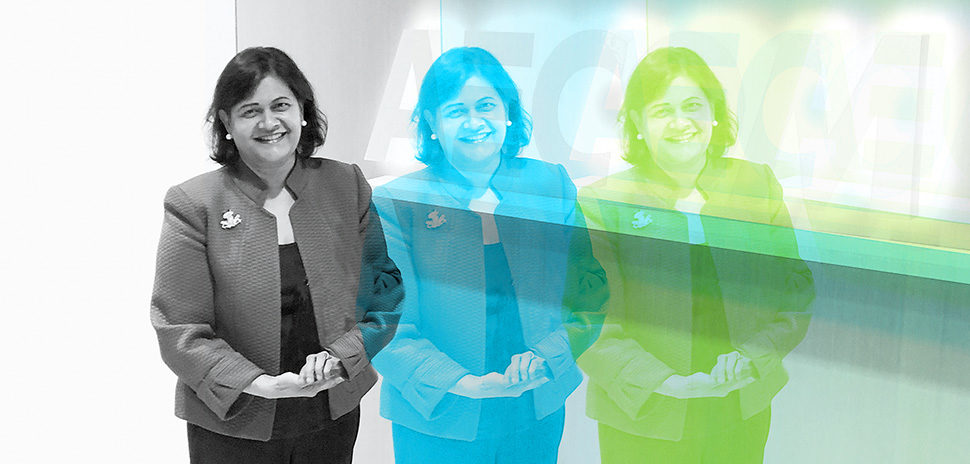It’s a common saying that it takes a village to raise a child. For Dallas’ new Comprehensive Environmental & Climate Action Plan (CECAP), it took two major committees, two rounds of formal community meetings, more than 180 individual meetings with community groups, and a review of over 9,000 unique comments from surveys and other public response mechanisms to develop and launch the plan.
The Dallas City Council unanimously passed the plan on May 27, marking Dallas’ first CECAP.
“The biggest winners today are the residents of the City of Dallas. This is their input, this is their plan, this is what they wanted to see, and we made sure that all of us together are building a stronger Dallas,” Omar Narvaez, City of Dallas District 6 Councilman and Chair of the Environment and Sustainability Committee, said during a press conference on the day it passed.
The eight major goals of CECAP include: Dallas’ buildings being energy efficient and climate resilient, the city generating renewable and reliable energy, being a zero-waste community, Dallas protecting its water resources and communities from flooding and droughts, and all Dallas communities breathing clean air.
To achieve these goals, the plan lays out 97 actions that can be taken.
Almost half of these actions primarily aim to reduce greenhouse gas (GHG) emissions. The City is estimated to reduce GHG emissions by 25 percent by 2030 and 66 percent by 2050—with hopes to reach the goal of 100 percent reduction by 2050, which is consistent with the goals of the Paris Climate Agreement.
The City of Dallas worked with AECOM, a global infrastructure firm, along with over 35 other organizations to develop CECAP. AECOM Senior Urban Planner Tatum Lau, one of our 50 North Texas innovators and disruptors, worked as the senior planner and deputy project manager for CECAP.
Moving forward, Lau says they expect an Environment and Sustainability Advisory Committee made up of professionals and community members to be formed for CECAP’s implementation. They also expect more details to come out concerning the implementation and monitoring of the 97 actions.
“We know that at least five actions will be implemented before the end of the year including the creation of a Food Advisory Council and updates to the building code to facilitate the installation of solar panels and EV charging infrastructure on new construction,” Lau told Dallas Innovates.
During the press conference, Dallas Mayor Eric Johnson spoke on growing up near a lead smelter plant in West Dallas and how it’s not something anyone would want for their children.
“Now, I believe we’re taking steps to overcome these challenges and to make Dallas truly a global leader in addressing environmental issues,” Mayor Johnson said.
Leading the effort
Two key committees led the planning for CECAP, an external Stakeholder Advisory Committee (SAC) and an internal Environmental Planning Task Force (EPTF).
EarthX, Public Citizen, and the University of Texas at Arlington formed the SAC, which is comprised of more than 35 organizations including those representing education, public health, neighborhoods, environmental advocacy, and large and small business interests.
Among the committee’s members were the Dallas Environmental Justice Network, the Dallas Sierra Club, and Grow North Texas representing advocacy and community; Lyda Hill Philanthropies, Toyota Motors North America, and the Dallas Regional Chamber representing business; UT Arlington, Paul Quinn College, and Dallas County Community College District representing academia; Parkland Hospital, Texas Trees Foundation, and The Nature Conservancy representing health; and the City of Dallas, North Central Texas Council of Governments, and Dallas Area Rapid Transit representing government.
The committee met on five occasions to develop a vision as well as actions and goals for CECAP, according to a plan released in May.
The EPTF was made up of city staff to make sure that departments such as Dallas Water Utilities, Economic Development, and Planning & Urban Design, were meeting regularly to discuss the plan’s progress along with topics of interest.
“Moving forward, a regional climate coalition, made up of cities from all over North Texas will play an important role in ensuring a coordinated and regional effort,” Lau says.
The CECAP is far from being Dallas’ first environmental initiative. Among its past environmental efforts, Dallas adopted the Green Building Ordinance requiring new buildings to meet higher efficiency standards in 2008. Dallas bought renewable energy for all of its facilities in 2015 and passed an Air Quality Resolution the following year.
CECAP was initiated in January 2019. The plan is expected to be reviewed annually and updated every three years.
“My takeaway, as was reflected by what many others said, is that the passing of CECAP is momentous for the city, but just the first step to a long journey that will need to rapidly accelerate if we wish to create a safe, healthy and prosperous region and significantly reduce the risks,” Lau says.
![]()
Get on the list.
Dallas Innovates, every day.
Sign up to keep your eye on what’s new and next in Dallas-Fort Worth, every day.










![Erica Kosemund, Chief Brand Officer, Choctaw Nation of Oklahoma; Gillian Breidenbach, Chief Partnership Officer, North Texas FWC Organizing Committee; Chief Gary Batton, Chief of Choctaw Nation of Oklahoma; Monica Paul, Executive Director of Dallas Sports Commission and President of North Texas FWC Organizing Committee; John Hobbs, Senior Executive Officer of Communications, Choctaw Nation of Oklahoma; and Heidi Grant, Senior Executive Officer of Commerce Administration, Choctaw Nation of Oklahoma, celebrate Choctaw Casinos & Resorts becoming an Official Dallas World Cup 2026 Host City Supporter. [Photo: North Texas FWC Organizing Committee/Choctaw Casinos & Resorts]](https://s24806.pcdn.co/wp-content/uploads/2025/12/FIFA-Choctaw-dec-2025-75x69.jpg)


![Erica Kosemund, Chief Brand Officer, Choctaw Nation of Oklahoma; Gillian Breidenbach, Chief Partnership Officer, North Texas FWC Organizing Committee; Chief Gary Batton, Chief of Choctaw Nation of Oklahoma; Monica Paul, Executive Director of Dallas Sports Commission and President of North Texas FWC Organizing Committee; John Hobbs, Senior Executive Officer of Communications, Choctaw Nation of Oklahoma; and Heidi Grant, Senior Executive Officer of Commerce Administration, Choctaw Nation of Oklahoma, celebrate Choctaw Casinos & Resorts becoming an Official Dallas World Cup 2026 Host City Supporter. [Photo: North Texas FWC Organizing Committee/Choctaw Casinos & Resorts]](https://s24806.pcdn.co/wp-content/uploads/2025/12/FIFA-Choctaw-dec-2025.jpg)

















